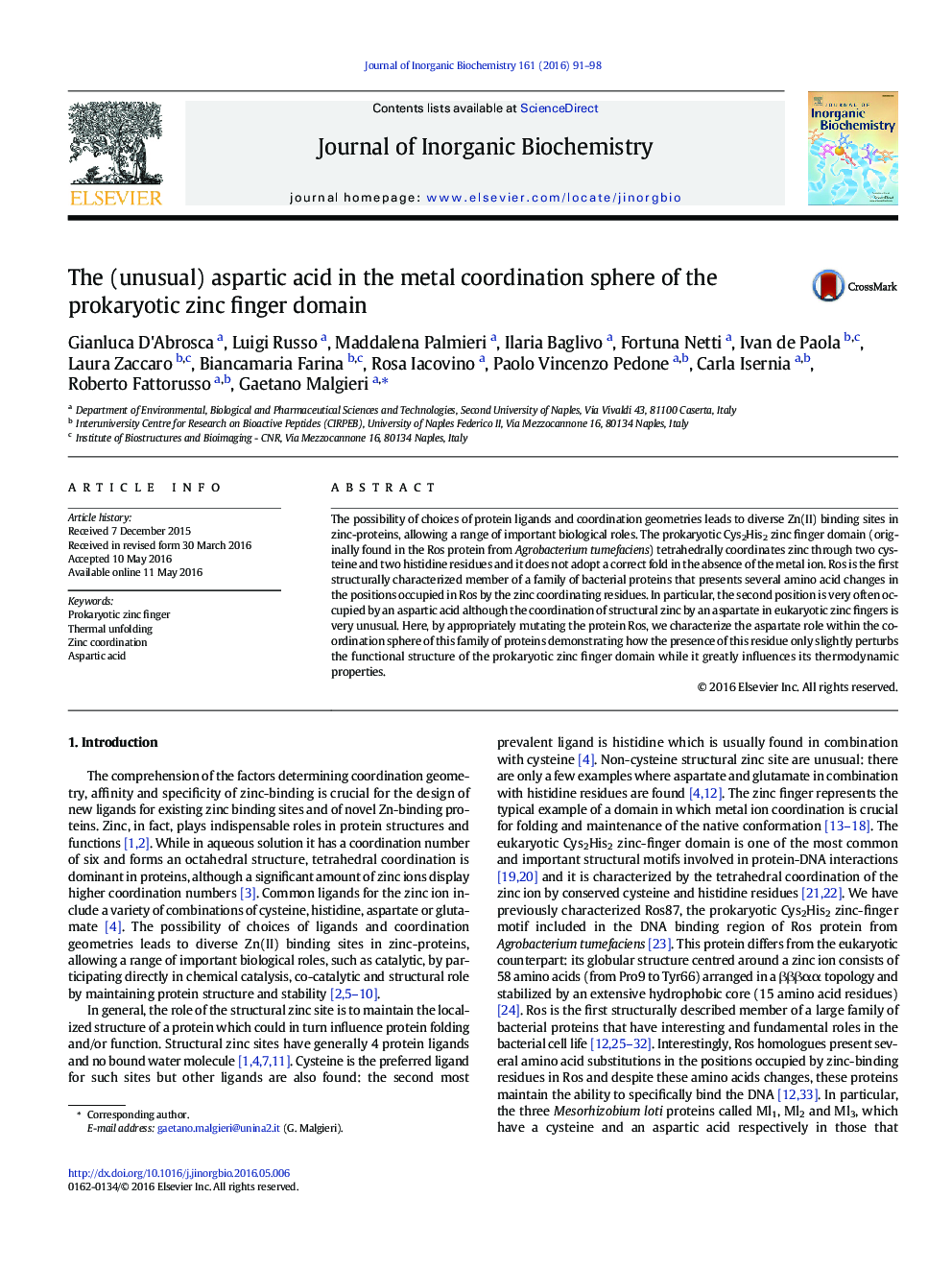| Article ID | Journal | Published Year | Pages | File Type |
|---|---|---|---|---|
| 1315807 | Journal of Inorganic Biochemistry | 2016 | 8 Pages |
•Aspartate in the second metal coordinating position of the prokaryotic zinc finger•Cysteine to Aspartate mutation slightly perturbs the structure of the protein.•Changing coordination cluster deeply influences the protein thermodynamic properties.
The possibility of choices of protein ligands and coordination geometries leads to diverse Zn(II) binding sites in zinc-proteins, allowing a range of important biological roles. The prokaryotic Cys2His2 zinc finger domain (originally found in the Ros protein from Agrobacterium tumefaciens) tetrahedrally coordinates zinc through two cysteine and two histidine residues and it does not adopt a correct fold in the absence of the metal ion. Ros is the first structurally characterized member of a family of bacterial proteins that presents several amino acid changes in the positions occupied in Ros by the zinc coordinating residues. In particular, the second position is very often occupied by an aspartic acid although the coordination of structural zinc by an aspartate in eukaryotic zinc fingers is very unusual. Here, by appropriately mutating the protein Ros, we characterize the aspartate role within the coordination sphere of this family of proteins demonstrating how the presence of this residue only slightly perturbs the functional structure of the prokaryotic zinc finger domain while it greatly influences its thermodynamic properties.
Graphical abstractThe mutation to aspartate of the second coordinating cysteine only slightly perturbs the functional structure of the prokaryotic zinc finger domain while it greatly influences its thermodynamic properties.Figure optionsDownload full-size imageDownload as PowerPoint slide
